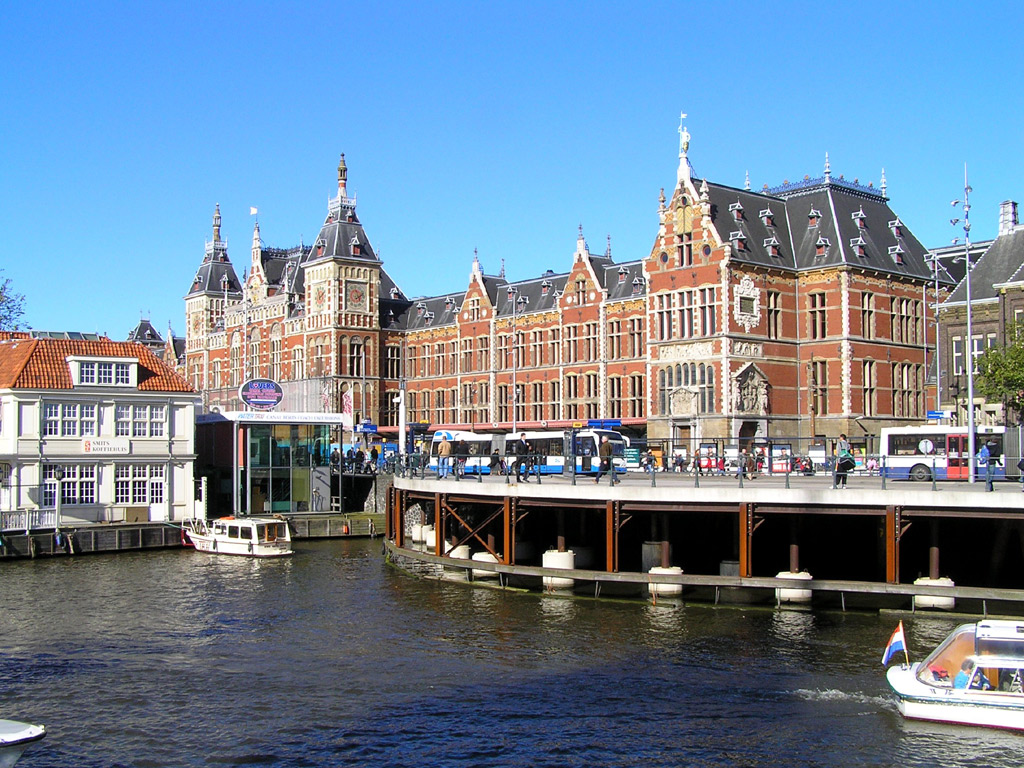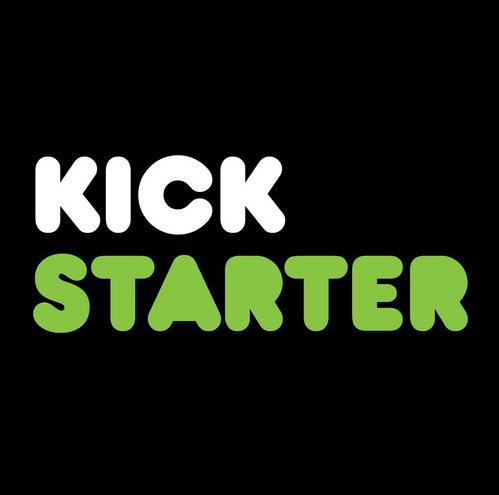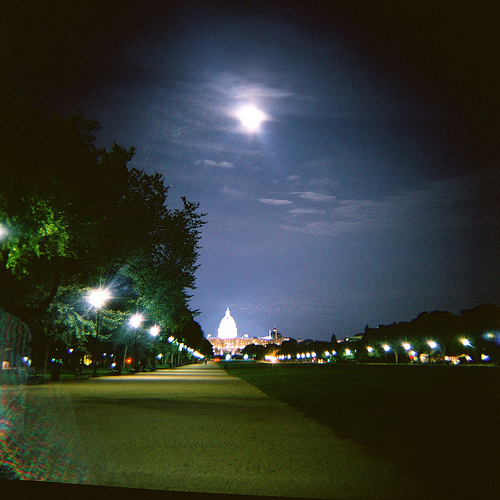It is that time of the year – work is starting to pick up and school is back in session. To mark the beginning of a new academic year, this month’s round up of news focuses on current events regarding arts education.
Interactive Map: Who Received NEA Grants In 2016?
Public Financing for the Arts in Europe Takes a Hit
 Tell me if you have heard this one before.
In the midst of an economic downturn, a country desperately searches for cuts in spending anywhere it can, as calls for budget austerity grow louder. In the end, it’s the more vulnerable programs that are hit the hardest, which often includes education programs, safety net measures, and the arts community.
Tell me if you have heard this one before.
In the midst of an economic downturn, a country desperately searches for cuts in spending anywhere it can, as calls for budget austerity grow louder. In the end, it’s the more vulnerable programs that are hit the hardest, which often includes education programs, safety net measures, and the arts community.
While that above paragraph would describe the arts community in the United States in recent years, the trend is now playing out across Europe as debt-ridden countries turn to austerity measures in the face of the European debt crisis. While European countries spend significantly more on the arts than we do in the United States, the dangers of budget austerity in the coming years for the arts community in several European countries are very, very real.
I have been thinking a lot about this issue of arts funding in Europe vs. the United States over the past week, and two events in particular heightened my interest. First, this past Friday, we sponsored a Carnegie Mellon Master of Arts Management Speaker Series event with the Consulate of the Netherlands, who were in town for the annual Dutch Festival in Pittsburgh. We started talking about the difference in the way the arts are funded in a country like the Netherlands versus the way it is funded here at home. More on that in a minute.
The other item that caught my interest was a front page story in the New York Times yesterday about the fate of public financing for the arts in Europe. As I mentioned above, Europe is now going through the same kind of austerity measures that rocked the United States in 2009: debt is growing, calls for fiscal restraint are getting louder, and every program is being measured for its return on investment and how important it is going forward.
The numbers are striking: as the New York Times reports, in the Netherlands, the budget for arts and culture is seeing a decrease of roughly $265 million, or 25 percent. In addition to those cuts, the public is being asked to pay more to see shows and events, with increased taxes on tickets.
These cuts are hitting smaller venues, troupes, and companies the hardest: with less funding to go around, existing expenditures are being targeted at more established performers, forcing more unique acts, which may be struggling for audiences, to face an uncertain future.
And while some may feel that cuts to the arts in Europe would have little effect on the arts here in the United States, one of the expenses artists in Europe are cutting back on are trips and performances overseas, to countries like the United States. Artists are cancelling trips and forcing festivals to find alternative performers.
Another effect this is going to have on the American arts community is over the issue of fundraising. As we discussed with the Consulate of the Netherlands on Friday, there are different views towards art funding in Europe than there are here. In a country like the Netherlands, a resident pays higher taxes to pay for additional services like health care, transportation, and safety net measures. Another element of those increased taxes is funding for the arts; with the government taking a higher percentage out of every paycheck, many Dutch residents feel they are less inclined to donate their own money to the arts because they feel like the government is already doing it for them.
Here in the United States, the opposite is true: the National Endowment for the Arts (NEA) receives such a small percentage of overall government revenue (usually in the range of $150-160 million, compared to billions of dollars in several European countries) that the vast majority of funding for the arts comes from donations from individuals. Since Americans are taxed at a much lower rate, they have more disposable income, and thus more free to donate it to the art of their choosing. There are issues of whether a lot of this money is really going to where it is needed, but that is a discussion for another day.
With European governments cutting back on their arts funding, this is naturally going to lead to artists in Europe to seek alternative sources of revenue. As the New York Times explains, this includes going after their descendents currently living in America – who may be already donating to arts organizations in their communities.
So this presents a problem: a global recession and austerity measures in dozens of countries, all leading to a shift in the way arts are funded worldwide. It will lead to more uncertainty, a greater dispersion of artistic funding and increased competition for the individuals who provide a sizeable percentage of giving.
Is the current model, where American artists rely mostly on private donations and European artists rely on government grants, sustainable? For the United States, absolutely. With calls from some politicians to cut and even eliminate funding for the NEA and other culture programs, there is certainly little chance of seeing an increase in federal funds for the arts.
As for Europe? That is a different story. As the story goes, as the pond gets smaller (in this case, the pond symbolizing the amount of funding), the fish will get nervous, and perhaps seek refuge elsewhere, in the form of spending more of their time fundraising, at the expense of the very same art they are seeking to promote. With artists now having to listen to potential funders, who may have a different vision for what kind of art they want to see, the impact on what kind of art is made and performed is bound to be substantial.
In the short term, the effect is obvious: less festivals, traveling art troupes, and shows. Fewer jobs for artists in countries like Italy, Hungary, Netherlands and Greece. Fewer opportunities for tourists and residents to see the best of what each of these countries has to offer.
It really is sad, but perhaps unavoidable. As I have written before, we seem to find ourselves in the era of budget austerity, and even while the economy has shown signs of improvement in recent months, the desire to increase funding for the arts pales in comparison to support for other existing programs.
The promise and benefit of increased funding for the arts, both at the private and federal level, is well known to all readers of this blog. The New York Times piece describes Europe as the place “where art is life,” and while that is certainly true to anyone who has visited, the newfound austerity measures being put in place represent a significant threat to that very same life going forward.
Kickstarter Reaches Major Milestone
 Depending on your perspective, the following news is either a cause for celebration, or a sobering reminder of the state of federal funding for the arts in America. Or perhaps both.
Kickstarter, the funding platform for thousands of arts and other creative projects, announced last week that it is projected, through its website and thanks to thousands of contributors, to be on track to receive over $150 million in pledges in 2012, by far its biggest and most successful year to date.
Depending on your perspective, the following news is either a cause for celebration, or a sobering reminder of the state of federal funding for the arts in America. Or perhaps both.
Kickstarter, the funding platform for thousands of arts and other creative projects, announced last week that it is projected, through its website and thanks to thousands of contributors, to be on track to receive over $150 million in pledges in 2012, by far its biggest and most successful year to date.
This is wonderful news for the arts community, and will help thousands of artists get their projects off the ground. However, the amount does represent a milestone of sorts: while substantial in its own right, the $150 million figure also surpasses the entire 2012 annual budget of the National Endowment for the Arts (NEA), a federally funded program with the might of the United States government behind it.
So it begs the question: as sites like Kickstarter grow in popularity, and help steer more funds to specific arts projects, does federal funding for the arts carry less significance going forward?
We’re big fans of Kickstarter here at Tech in the Arts, and have written about the site’s innovative funding platform and some of the better projects that it has featured. For those who are unfamiliar with Kickstarter, a quick primer: people can post projects online, ranging from art to fashion, film to music, photography to theater, and request donations to get the projects running. The people responsible for the projects outline what they hope to accomplish, how much money they need, and can offer incentives for people to donate money, like free tickets or exclusive merchandise, depending on the amount donated. In the end, if the project fails to reach its fundraising goal (usually within a couple of weeks), no money is exchanged, and the project fails.
As it relates to the juxtaposition of the two entities, first a few caveats. Projects from outside the United States are featured, so the money in question is not confined just within our borders. Second, the site is on track to secure $150 million in PLEDGES in 2012, which does not guarantee funding. According to the site, a little over half of projects fail to meet their fundraising goals, meaning funds for those projects do not change hands. However, with people around the world willing to contribute that much money, it does represent a significant milestone in the arts community.
I wrote last week about the 2013 funding request for the NEA in President Obama’s budget, and welcomed the news about the funding being increased for the new year. However, even with the increase, the budget has failed to increase with the rate of inflation, and is actually a decrease from the early 1990’s, when the budget was in the range of $180-185 million per year.
However, as budget deficits climb and the debt reaches new heights each year, the axe seems to fall on what’s referred to as “discretionary” spending, or spending that’s not mandated by existing laws, first, and that includes programs like the arts, education programs, and public service organizations. This has especially been true in recent years, with calls by some in Washington to drastically cut discretionary programs and cap them from future increases.
As I talked about last week, the NEA is an essential resource for arts organizations, after school programs, schools and community groups who depend on federal programs to survive. Few of these groups generate the amount of internet excitement as the projects on Kickstarter, and cannot rely on social media or online funding mechanisms to continue. Their continued existence rests largely with the help of their local communities, state and local organizations, and most importantly, the federal government.
My concern is that with sites like Kickstarter providing a mechanism for taxpayers to select the individual projects they would like to see funded, the desire to continue to fund the NEA and other arts programs will diminish. Why, after all, have taxpayers pay for a central agency like NEA when individuals can contribute to the projects in their community, or the projects they share an interest with, instead of some program or group they have never heard of?
The NEA has been targeted for elimination in recent sessions of Congress, but thankfully it has survived. Even though the advent of online fundraising tools has provided a steady source of pledges and funding for arts projects, the backbone of arts funding continues to be at the federal and local levels, and any decrease or entire elimination of funding would have a catastrophic impact on artists, the arts community, and arts lovers everywhere.
Another way to look at it this: with the advent of sites like Kickstarter, funding for the arts is increasing, and is becoming a wildly successful endeavor. Last year, Kickstarter received over $90 million in pledges, with several projects hitting the $1 million mark. This is NEW money coming into the arts community, and it deserves to be celebrated.
The ideal, however, is a world where both funding mechanisms continue to move forward, and serve the unique niches they cater to: Kickstarter to the up-and-coming and innovative film/music/theater/art projects and NEA for the community-based groups and local arts organizations.
Congratulations are in order for our friends at Kickstarter, with many more years of continued pledges and success moving forward. It is my hope that the same kind of success and impact continues with NEA, as it faces significant hurdles in Congress to secure future funding.
Celebrating National Arts and Humanities Month
Protecting Federal Funding for the Arts
In Washington, an era of budget austerity and renewed calls for less government spending have led to increased fears that the arts, long protected from budget cuts, will see its federal funding further decreased for the coming fiscal year.

While Congress has passed several temporary budget measures this year, the most recent continuing resolution ends on November 18th, when the government is set to run out of money. Under the terms of the recent debt-ceiling deal reached by both parties, Congress has committed to cutting $21 billion in spending from the Fiscal Year 2012 budget, and it is widely expected that the bulk of these cuts will come from what’s referred to as “non-defense discretionary spending,” which includes areas such as education, infrastructure, and most pertinent to our community, the arts.
The arts community went through a similar struggle last year, when the National Endowment for the Arts saw its Fiscal Year 2011 funding reduced to $155 million, a $13 million reduction from the year before. For the upcoming fiscal year, the numbers look even worse: a bill passed by the House of Representatives in July would further cut FY2012 NEA funding to $135 million, which would represent a 13 percent decrease and the deepest cut to the agency in 16 years.
Despite the FY2012 budget being due next month, there is still a long way to go. President Obama has requested in his FY2012 budget proposal that the NEA be funded at $146 million, which represents a cut from the FY2011 figures, but is less severe than the House version that was passed in July.
With Congress returning to session this week, it’s important for us in the arts community to use technology to reach out to our members of Congress and ask them to support funding for the arts. There are a number of easy ways you can do this:
- First, contact your member of Congress, either by letter, e-mail or by phone. The easiest way to do this is through the Americans for the Arts website, where you can send a personalized letter to your Congressman and U.S. Senators that includes several talking points about the impact that arts funding has on our communities and nation as a whole.
- Second, join the Arts Action Fund, which is at the forefront of advocating and lobbying for increased funding for arts programs and education. It’s free, and is an invaluable resource providing updates on the efforts in Congress and around the country.
- Third, share the news with a friend on Facebook, Twitter or Google+. One way to do this is by following the Arts Action Fund’s Arts Vote 2012 campaign, dedicated to including arts and arts education issues in the 2012 political campaign. Search for #artsvote on Twitter for recent updates.
This isn’t the first time you’ve heard from Technology in the Arts about lobbying Congress to protect arts funding, and given the current political climate, it certainly won’t be the last. This is not a partisan issue, but is instead an issue that unites all of us who are passionate about the arts community and protecting funding for the next generation of artists and performers.
While the long-term budget deficit is something that we can all agree needs to be dealt with, doing so on the backs of such groups as the National Endowment for the Arts and the National Endowment for the Humanities will only serve to further decimate arts education programs at the state and local levels that have already endured painful budget cuts in recent years.
In the newfound era of budget austerity in Washington, any assumptions we had about federal arts funding being kept at past levels are gone. In order to protect the future of arts funding, the fight starts now.
(Photo: CC by kevin dooley)
Tweet the Arts on National Arts Advocacy Day
Next Tuesday, April 13th, is National Arts Advocacy Day, when more than 500 arts advocates will be talking to their government officials in Washington, D.C. about the power of the arts and the need for arts education and arts funding. Whether or not you can make it to DC on April 13, please take the time to create a tweet featuring the hashtag #arts on your Twitter accounts and tell you friends to do the same. If we get enough tweets with #arts we’ll push “arts” into Twitter trending topics for the day.
More information can be found at http://www.tweetartsday.org







